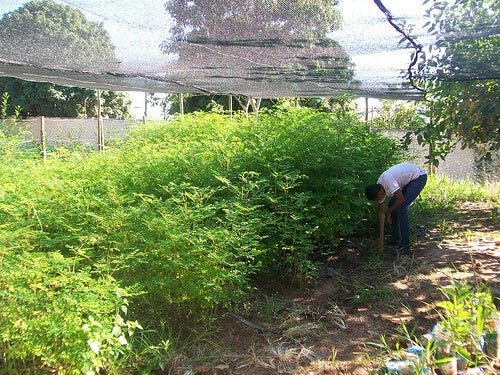Plant pests and diseases have increased in recent years. The big problem is that they threaten food security and can mean big losses for farmers. What are the most frequent? The spread of plant pests and diseases has increased in recent years and, in fact, has reached epidemic dimensions. Although it is a problem that receives more and more attention, not enough strategies have yet been developed to reduce the impact it generates at an economic and environmental level.

Outbreaks and pests are responsible for huge losses of crops and pastures in many countries. Therefore, they have also become great enemies of farmers and, in addition, they have managed to be classified as a threat to the food security of thousands of people.
What are the most common? We tell you about them in this article.
Basic Guide to Plant Pests and Diseases.
Talking about plant pests and diseases can be too long and difficult to understand. Fortunately, at present, they have a wide variety of information about parasites, insects, viruses, fungi and bacteria that can affect orchards.
This information has been key to knowing how they attack and what the best way to control them is. So, in today’s space we want to share a basic guide on the most common pests and diseases that can affect the plants in our orchards and gardens. Do not miss it!
Aphid.
It is the best known parasite and there are several species of it. In general, they have a sucking beak that allows them to pierce the leaves and stems of plants to feed on their sap.
They are related to problems of deformation and curling of the shoots and leaves. They often affect the crops of beans, cabbage, potatoes and peas, among others.
White fly.
They are easy to identify because they have a very peculiar whitish color. They usually inhabit the back of the crop leaves and fly when we move the leaves by hand.
Its presence can cause premature damage to the leaves and yellowing of the leaves. They are common in tomato, bean, pepper, onion and cabbage crops, among others.
Red spider.
Its scientific name is Tetrany chusurticae. They are very small spider mites that usually harbor the back of the leaves. Its damages are recognizable to the naked eye, since they produce yellowish spots on the leaves. Also, when the pest spreads, the leaves dry out and fall off.
This pest was found in a wide variety of crops, including fruit trees, garden plants or food crops such as potatoes, pumpkins, beans and almond.
Trips.
They are tiny insects that can attack all parts of the plant. When they proliferate, they make the fruits, leaves and stems acquire a very particular grayish-metallic color. They often damage flowers too. The most affected crops include:
- The tomato plant.
- The Jewish.
- The eggplant.
Nematodes.
They are very common parasites in orchards, especially when the soils are very humid. They can damage the roots and, therefore, they also kill the plant.
Sometimes, it is difficult to recognize them, since the symptoms are similar to those that the plant suffers from lack of water or nutrients. They often affect eggplant, potato and onion plants.
Bold.
It is a type of fungus that is associated with molasses, a sugary substance that can be secreted by aphids or whiteflies. It can be identified by the appearance of a black powdery layer on both the fruits and the stem.
In general, they can cause a loss of production because they affect the vigor of the plant. They are common in potatoes, peas, cabbages, zucchini, and peppers.
Rust.
It is another variety of fungus that can cause red pustules to appear on the back of plant leaves. It can deteriorate the leaves until they fall off. They often proliferate in bean, pea, and broad bean crops.
Wet rot.
Caused by the Erwinia genus of bacteria, it appears at first as an opaque, moist spot on the surface of the fruit. When it advances, the stain spreads and the fruit ends up rotting completely. It affects a multitude of crops, including potatoes and peppers.
Bacterial chancre.
It is one of the pests and diseases of plants that cause damage to both the stems and shoots, as well as the fruits. It is caused by bacteria of the gene ero Clavib acter, which produce some spots elongated stems and circular spots on fruits. The most susceptible crops include pepper and tomato.
Tomato mosaic virus.
To end this list of plant pests and diseases, we highlight the tomato mosaic virus. Its name comes from the spots it causes on tomato leaves, which resemble a mosaic in green tones. It can also affect pepper crops.
Did you know about these pests and plant diseases? If you identify in your garden, delves into how to control them. Now, keep in mind that pests should only be eradicated when they damage plants and crops. Do not forget!


